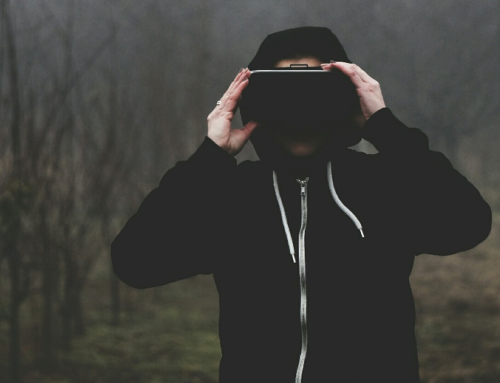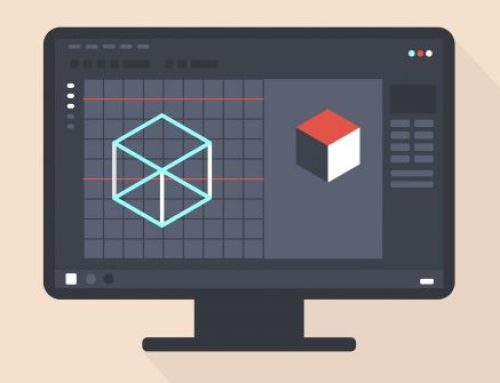Welche Plattformen zum Erstellen und zum Austausch von
VR-Content Sie kennen sollten.
360 Grad Fotografie, auch bekannt als Virtual-Reality-(VR)-Fotografie, hat in den letzten Jahren einen großen Einfluss auf die digitale Landschaft genommen und war eine der größten Neuerungen des Jahres 2016. Zudem beeinflusste es die Art und Weise, wie wir Medieninhalte erstellen und konsumieren.

Es wurden zahlreiche neue Produkte hergestellt, um diese neue Nachfrage zu befriedigen. 360 Grad Kameras, Kameraausrüstung, VR-Viewer und -Headsets sowie andere Produkte und Dienstleistungen sind wegweisende Profiteure dieses neuen Fortschritts in der hiesigen Technologie.
Neben den Herstellern von Produkten finden verschiedene Webseiten und Internetplattformen ihre eigenen Möglichkeiten, um die 360 Grad Fotografie weiter voranzubringen, und viele Institutionen unternehmen mutige neue Versuche bei der Anwendung von VR-Techniken.
Diese auf diese Weise erzeugten Medien sind zutiefst interaktiver als zweidimensionale Bilder, und das Potenzial für 360 Grad Bilder und Videos ist riesig, da diese mittlerweile sehr leicht erstellt werden können. Viele Blogger und Content-Writer können heute diese neuartigen Inhalte sehr leicht in Ihren Web-Content einbetten.
Unternehmen, die viel in VR investieren.
Viele dieser Unternehmen sind bestrebt, den Zugang zu 360 Grad-Content so einfach wie bei text- und bildbasierten Inhalten zu gestalten. Obwohl diese Inhalte noch als recht neuartig und modern gelten, werden sich diese VR-Medieninhalte früher als später als fester Bestandteil des Webs etabliert haben.
Wir freuen uns über die Tatsache, dass die Interaktion mit 360 Grad Medien für jeden möglich sein wird, der über ein grundlegendes Verständnis für die Funktionen der Verwendung eines Webbrowsers besitzt – was heutzutage im Grunde jedermann ist. Der reibungslose Übergang zu mobilen Geräten wie Smartphones ist ein weiteres interessantes Element der Bewegung. Produkte wie Google Cardboard wurden entwickelt, um das Erleben von VR zu erleichtern.
In diesem Blogbeitrag haben wir eine Liste der wichtigsten Webseiten zusammengestellt, auf denen die eine oder andere Weise 360-Grad-Fotografie verwendet wird. Darüber hinaus werden wir Ihnen auch Informationen darüber bereitstellen, wie Sie mit der Arbeit der neuen Technologien begonnen haben.
Facebook 360.
Es erscheint naheliegend, sich zunächst mit dem Zusammenspiel von Facebook mit der VR zu befassen, da Zuckerbergs Social-Media-Plattform auf dem besten Weg zu sein scheint, die Auszeichnung als meistgenutzte Plattform im Internet zu erringen. Facebook hat daran gearbeitet, einen relativ einfachen, eleganten Ansatz für die Implementierung von 360 Grad Fotos und Videos zu entwickeln.
Die 360-Grad-Media-Funktionen von Facebook sind speziell kompatibel mit iOS, Android, Google Street View und mehr. Facebook kaufte auch Oculus, ein aufstrebendes VR-Startup, für mehr als 2 Milliarden Dollar, was die Legitimität der Technologie und das Ausmaß Ihrer Bedeutung im Web erheblich erhöht hat. Dieser Kauf hat viele Unternehmen in ihrem Vorhaben bestärkt, mehr Investitionen in die VR zu tätigen.
Facebook hat auch eine Initiative gestartet, um seine Nutzer zu unterstützen und zu ermutigen, originelle Inhalte zu erstellen und ihre eigenen Fotos und Videos zu teilen, anstatt Beiträge von viralen Seiten und Webseiten teilen. Die Möglichkeit, 360-Grad-Bilder auf Ihrer Timeline zu veröffentlichen, ist ein Versuch, Benutzer davon zu überzeugen, ihre eigenen Beiträge zu erstellen und zu teilen. Im Moment kann ein 360 Grad Foto nicht direkt über Facebook aufgenommen werden. Allerdings ist es sehr einfach und komfortabel Panoramaaufnahmen von Ihrem mobilen Gerät hochzuladen oder dies mit Ihrer DSLR und/oder 360 Grad Kamera unter Verwendung eines Drittanbieterprogramms zu tun.
Flickr VR.
Flickr, die beliebte Website, die als Hosting-Plattform für Bilder und Videos fungiert, hat eine spezielle App entwickelt, die die 360 Grad Aufnahmen hervorhebt, die in ihre Datenbank hochgeladen werden. Obwohl nicht so groß wie Facebook, ist Flickr keine Branchenminiatur, und da es Yahoo gehört, haben sie auch einen Weg gefunden, das kontinuierliche Wachstum der 360-Grad-Fotografie durch ihre Flickr VR-App zu priorisieren und zu fördern.
FlickrVR ist einfach zu durchsuchen und bietet eine Fülle von Bildern und Videos, die die Benutzer genießen können. Durch die Verwendung des Samsung Gear VR-Viewers, der vollständig mit FlickrVR kompatibel ist, können Sie in die Umgebungen eintauchen, die in diesen Bildern und Videos aufgenommen wurden. Wenn Ihnen diese Ausrüstung fehlt, können Sie alternativ auch im Bild Klicken und Ziehen, um sich alles sehr genau anzusehen. Diese App sowie mehrere kleinere Communities in den Foren auf Flickr widmen sich der Bereitstellung eines dynamischen Spektrums an Panoramas.
Kuula.co.
Ähnlich wie Flickr ist Kuula.co eine umfassende Sammlung kreativer 360-Grad-Bilder. Diese Plattform ermutigt die Benutzer, Ihre Arbeit auszutauschen, sich gegenseitig Feedback zu geben und zu einer beeindruckenden Galerie von kuratierten Bildern beizutragen. Kuula.co wird oft als Plattform für Künstler und Fotografen vermarktet, um ihre Werke zu teilen, und ist in der Regel ein viel communityfreundlicheres und kleineres Unternehmen als Flickr. Es zieht eine etwas weniger etablierte Kundschaft an.
Zum Zeitpunkt seiner Gründung war Kuula definitiv die erste legitime Website mit dem Ziel, eine Plattform zu schaffen, die der breiten Palette von Einsendungen von 360 Grad Fotos und Videos, die durch das steigende Interesse am VR-Bereich generiert wurden, ein Zuhause bietet.
Three Sixty.
Three Sixty ist eine benutzerfreundliche Viewer-Site, die einfach das Ziehen und Ablegen Ihrer VR-Fotos auf ihre Seite beinhaltet, um sie zu erkunden und in ihrem eigenen Stil und ihrer eigenen Dimension zu teilen. Wenn Sie eine 360-Grad-Kamera besitzen oder über die richtige Technologie oder Apps verfügen, um Ihre DSLR oder Ihr Smartphone in ein effektives VR-Erfassungsgerät zu verwandeln, ist dies eine beliebte Plattform.
Theta 360 Gallery.
Die Ricoh Theta ist eine der beliebtesten 360-Grad-Kameras auf dem Markt. Wenn Sie eine dieser 360-Grad-Kameras besitzen, ist dies eine großartige Community-Galerie, der Sie unbedingt zugehören sollten. Dies ist eine einzigartige Seite, weil sie die Erfahrungen der Benutzer eines bestimmten Produkts vereint. Es ist besonders beliebt bei Anwendern und Liebhabern der Ricoh Theta.
Google Photos.
Wenn Sie sich Ihre Bilder in 360 Grad ansehen möchten, ist Google Photos kompatibel mit Programmen wie Google Cardboard und Dienstleistungen wie den Angeboten von Daydream, die es Ihnen ermöglichen, die VR-Aufnahmen, die Sie machen, oder die Videos, die Sie aufnehmen, zu erkunden. Google Photos fungiert als perfekter Speicherplatz für Ihre Panoramaaufnahmen und andere 360-Grad-Inhalte und ist kompatibel mit der Daydream-App, wenn Sie Ihr VR-Erlebnis auf die nächste Stufe heben möchten.
Google Fotos ist eine gute Wahl, wenn Sie planen, Ihre sphärischen 360-Grad-Bilder, Panoramen oder VR-Fotos anzusehen, die mit Sounds und zusätzlicher Tiefe ausgestattet sind. Ideale VR-Fotos können mit einer Pappkamera aufgenommen werden.
2VR.in
Es gibt nicht viele kugelförmige Bildhosting-Webseiten, die das Teilen, Hochladen und Anzeigen so einfach und unkompliziert machen wie 2VR.in. 2VR.in wird für seine Einfachheit und Kompatibilität gelobt und funktioniert harmonisch in Webbrowsern auf Desktop, iOS und Android.
Der Service ist beeindruckend und effektiv. Zudem ist es zu keinem Zeitpunkt notwendig, bestimmte Software, Plugins oder Erweiterungen herunterzuladen.
WordPress.
WordPress hat vor kurzem beschlossen, ein VR-Plugin in sein Repository aufzunehmen, welches angesichts der bisherigen Entwicklungen als notwendig erscheint, wenn man weiterhin das meistgenutzte CMS der Welt sein möchte.
WordPress ist eine der größten Plattformen im Internet für professionelle und unabhängige Seiten, und die Tatsache, dass ein einfaches Plugin entwickelt wurde, das es Bloggern, kleinen Unternehmen und Benutzern ermöglicht, sich bequem mit VR auseinanderzusetzen, wird sich sicherlich positiv auf die weitere Entwicklung von WebVR auswirken.
Schlußfolgerungen.
Die 360-Grad-Fotografie ist angekommen und wird sich in Zukunft durch weitere Fortschritte noch stärker verbreiten. Nicht nur populäre digitale Organisationen wie Apple, Facebook, WordPress und Google machen mutige Schritte in Ihren Bemühungen, die Präsenz von 360-Grad-Fotos- und Videoinhalten in ihrem Repertoire richtig zu priorisieren, sondern ganze Communities, zum Erstellen und Austauschen von 360 Grad Bildern, bilden sich und werden immer populärer. Mehrere lebendige Sammlungen von 360-Grad-Bilder, Panoramen und VR-Material sind bereits vorhanden.
Die Fortschritte in der VR-Fotografie sind in den letzten Monaten und Jahren schon beeindruckend. Zwei Bewegungen werden in Kürze kombiniert, da 360-Grad-Videos bald mit dem Livestreaming-Trend verschmelzen werden, um Live-Inhalte zu erstellen, die vollständig erforscht werden können. 360-Grad-Inhalte sind derzeit ein großer Erfolg, und es werden immer wieder Meilensteine gesetzt, so dass die Geschichte der VR-Fotografie durch Innovationen, die noch vor nicht allzu langer Zeit von vielen Anwendern der digitalen Technologie als unmöglich angesehen wurden, immer wieder neu geschrieben wird.
Der rasante Aufstieg der VR-Fotografie begann als Smartphone-Verrücktheit und hat sich zu einer blühenden Branche entwickelt, mit Produkten zur Unterstützung der Erstellung von VR-Inhalten durch Ergänzungen zu Standard-DSLRs, 360 Grad Kameras, Apps und Desktop-Software. Speicher-Seiten, Zuschauer und Communities werden jeden Tag vergrößert, um den Fortbestand der VR-Fotografie und des Filmemachens zu unterstützen, und die Industrie rund um das Konzept der VR ist sicherlich auf dem Weg nach oben und nicht nach unten.
Es mag seltsam erscheinen, es jetzt in Betracht zu ziehen, aber es könnte nicht sehr lange dauern, bis die Menschen auf standardisierte, stagnierende, zweidimensionale Inhalte zurückblicken, die der Vergangenheit angehören. Die Anzahl der merkwürdigen und praktischen Anwendungen, sowohl beruflich als auch persönlich, der VR-Technologie wird mit jeder neuen Weiterentwicklung und Anwendung der Technologie auf neue Aspekte des digitalen Lebens und der digitalen Kultur sicher wachsen.
Vielen Dank für Ihren Besuch.


